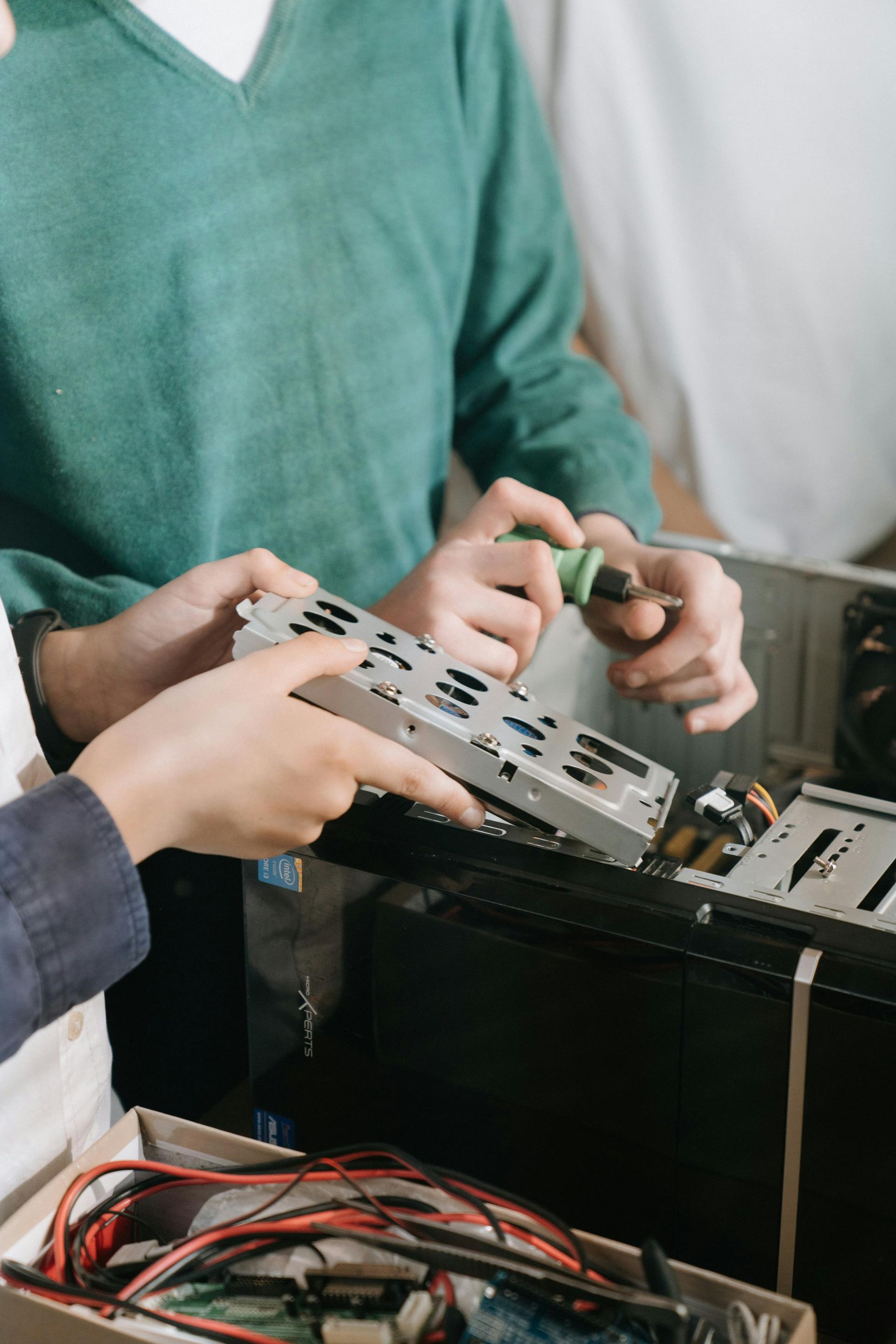GAME-CHANGING TRENDS FOR THE DATA CENTRE INDUSTRY
A look back at 2023 and towards 2024

Jamieson Lee Hill, 15th December, 2023
As the year draws to a close we examine some of the trends in the data centre sector in 2023 and look to 2024. IP House plays a crucial role in supporting the increasing demand for data storage, processing power, and connectivity. With tech developing at such a rapid rate, we are committed to staying ahead of the game.
1 a. AI and Colocation Data Centers
Artificial Intelligence is on everyone’s lips and data centre colocation is no exception. AI is revolutionising colocation data centers, bringing automation and intelligence to various aspects of our operations. AI-powered predictive maintenance algorithms can analyse data centre equipment performance in real-time, predicting potential failures and enabling proactive maintenance to minimise downtime. This improves operational efficiency and reduces the costs incurred with equipment failure.
Also, AI can be used for intelligent automation in routine tasks such as monitoring and troubleshooting. Furthermore, AI frees up time for your staff to work on other important projects. Equally, AI-powered threat detection and response systems make your cybersecurity more robust by mitigating potential risks.
Leveraging AI-driven insights, IP House optimises resource allocation and capacity planning for our clients based on data patterns and trends. This means we can improve your overall operational efficiency and optimise your resources usage.
1 b. AI Infrastructure Spending in the Data Centre Sector
Data Bridge Market Research predicts that AI infrastructure market spending will reach $422.5 billion by 2029, with an impressive 44% annual growth rate. Also, Nvidia's CEO, Jensen Huang, predicts a $1 trillion spend on data centre upgrades over four years driven by generative AI. As would be expected, the majority of this rapid growth in costs will be covered by multi-billion dollar brands like Amazon and Google.
With data centres in such high demand, especially in major markets such as the USA and Singapore (Tier One markets), vacancies are at a decade-low across North America. However, supply constraints are anticipated to lower by 2025 and beyond.
2. On-Site Energy Generation in Data Centres
Adopting on-site energy generation facilities to reduce reliance on the power grid and minimise carbon footprint is a very positive step towards Net Zero. Adopting measures such as equipping data centres with solar panels to generate renewable energy are one such example.
On-site energy generation has a number of benefits including long-term cost savings, increased energy independence, and improved sustainability. Furthermore, innovative energy storage technologies such as lithium-ion batteries or hydrogen fuel cells provide uninterrupted power supply during peak demand periods or grid outages. This shift towards on-site energy generation in data centres is supported by a study published in the ACM Digital Library. The report highlights the potential for next-generation data centres to optimise energy supply from on-site generators and the power grid.
3. The Rise of Smaller Data Centers
With the rise of edge computing and distributed data centres, smaller data centres are gaining popularity over larged sized ones. One of the benefits of edge data centres is that they are strategically placed closer to end-users. This allows faster content delivery and low-latency processing which is beneficial for real time analytics.
Smaller colocation data centres have the advantage of being agile to scale infrastructure, reduced latency for latency-sensitive applications, and cost savings with lower upfront investments. Thus, Edge computing is playing a significant role in creating faster, more efficient data processing. Therefore, the demand for smaller data centres is expected to increase in the future.
Indeed, the trend towards smaller data centres is becoming increasingly prominent in the tech industry. According to JLL, market research analysts predict the global edge data centre market to grow at a CAGR of 22.1%, reaching US$ 57.8 billion by 2031. The rise of edge computing and distributed data centres has been a driving force behind this. The need for edge computing with smaller data centres is now on the agenda for hyperscale data centre providers. They have realised the need to invest in smaller data centre. As Patrick Sweeney states,
“The trend toward edge computing is having a significant impact on the data center industry. Hyperscale data center providers now realize it is not a choice, they have to invest in edge computing infrastructure, and new companies are emerging to provide edge computing services such as micro-datacenters, immersion cooling and rapid deployability. The shift to edge computing is expected to create new opportunities for innovation and growth in the data center industry.”
Source: Patrick J Sweeney II, Linkedin article 2023
4. Managed Service Providers (MSPs) and Data Centers
“Gartner defines
MSP as a firm that offers network, application, infrastructure and security services through ongoing support. This could be through active administration on customers’ premises, in their MSP’s or in third-party data centers.”
Source:
NRI.com, Oct 2023.
Managed Service Providers (MSPs) are increasingly investing in building strong relationships with data centers to offer their clients scalable infrastructure, reliable connectivity, and advanced security features without big capital investments. By partnering with data centers, MSPs can enhance their service delivery, gain access to advanced infrastructure, and achieve cost efficiencies through shared resources.
Successful partnerships between MSPs and data centres have shown just how partnerships between the two sectors can provide end-to-end solutions that meet the ever evolving customer demands. The collaboration between MSPs and data centres benefits both parties and improves the overall service quality for clients. The spending on the MSP sector was massive in 2022.
“In Q2 2022, global spending on MSPs reached $8.8 billion – surpassing the $8 billion annual contract value for the fifth consecutive quarter, per ISG research.”
Source:
NRI.com, Oct 2023.
5. Looking Towards 2024
As we look towards 2024, the data centre industry is heading towards even greater continued growth. The increasing adoption of hyperscale data centres by major cloud providers is helping them meet the growing demand for storage, processing power, and AI-driven services.
Likewise, the collaboration between MSPs and smaller data centres is also improving services for end users and meeting the high demand. AI plays a major role in both small and large data centres worldwide. Also, the drive for energy generation from renewable sources is a key aspect. With the considerable rise in cyberattacks on UK businesses, cybersecurity will remain a top priority for IP House to protect all our customers with leading edge technologies.
Here at IP House in London, we are excited about the fast paced growth of our industry and embrace change at every step of the journey. By staying informed and leveraging these trends, we can innovate and improve for all of our clients.
Looking for colocation data centre services for your company? Let's talk. Please fill out the form below today!
Sources
1. The Eight Trends That Will Shape the Data Center Industry in 2023
2. https://brightlio.com/ai-colocation-data-center-market/
4. https://www.evoquedcs.com/blog/5-data-center-trends-2024
7. https://www.linkedin.com/pulse/trend-edge-data-centers-away-from-hyperscale-simply-sweeney-ii-dscae/
8. https://www.nri.com/en/knowledge/blog/lst/2023/fis/finsights/know-1026
Contact Us











